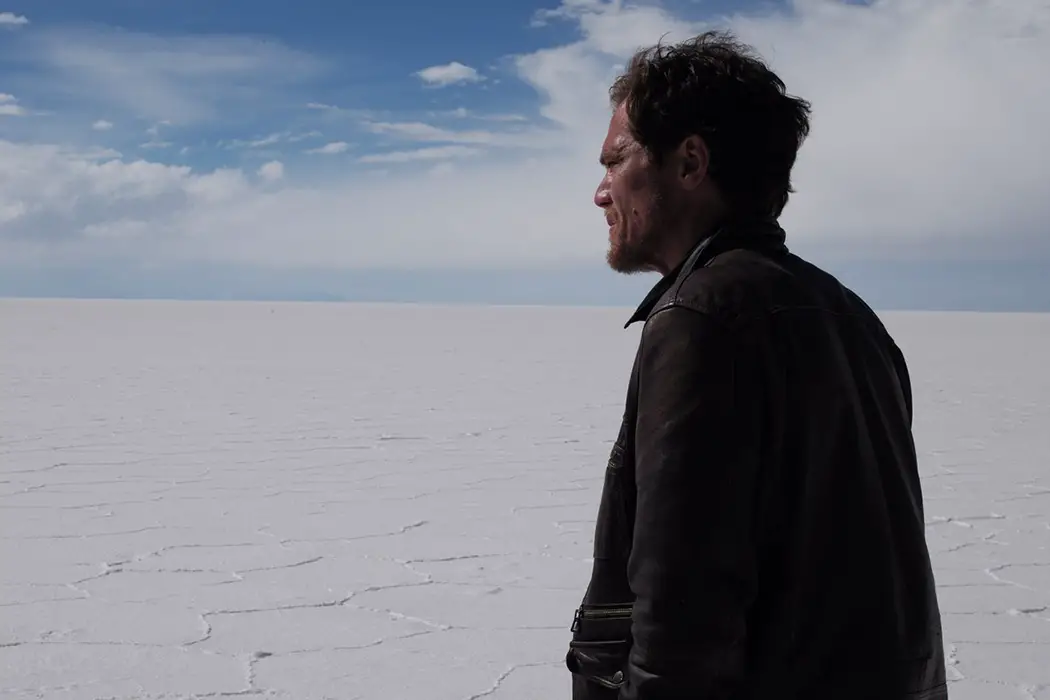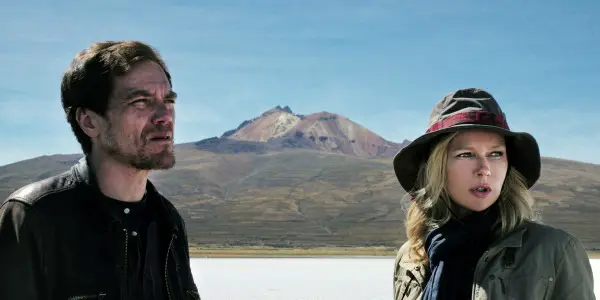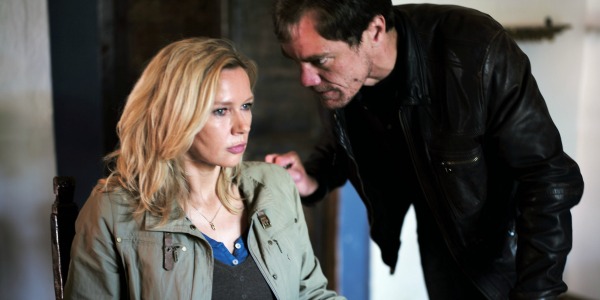SALT AND FIRE: An Enthralling Treatise On The Environment & Truth

Arlin is an all-around film person in Oakland, CA. He…
Werner Herzog has never been concerned with a strict representation of reality, even in his documentaries. Rather, he has repeatedly expressed that the goal for all his films is to convey an “ecstatic truth”, and the means he employs for a given film are those that he believes will allow him to achieve that goal most fully (it’s a concept included in what is almost certainly the only manifesto with reference to a farting glacier). The primary thrust of his documentary ethic is that fact does not necessarily equal truth, and at times it may be necessary to reexamine calcified “facts” in order to arrive at the true nature of an event, as represented through a film.
Salt and Fire is not a documentary, per se, but Herzog is famous for conflating fiction and non-fiction filmmaking, downplaying their difference and using elements from one in films seemingly of the other. In this case, he likely recognized the redundancy in making an environmental documentary to achieve the ecstatic truth of men and business’s environmental devastation, and decided instead to make a narrative feature. However, the film can be accurately described as a documentary of place. Famous for traveling to remote destinations for his films, Salt and Fire offers arguably the director’s most striking landscapes in a oeuvre that includes active volcanoes and and burning oil fields. To provide context, in place of Herzog‘s carefully cultivated narrator persona, we have Michael Shannon, whose corporate executive explains the surroundings to Veronica Ferres‘ environmental biologist.
Borrowing a loose structure and central characters from Tom Bissell‘s short story Aral, the director inserts sequences, changes details and alters the outcome to serve the needs of his truth. As he showed so defiantly and brilliantly with Bad Lieutenant: Port of Call New Orleans, the story is at the beck and call of the film as a whole, and the film’s allegiances to said narrative only exist so far as to support its aims.
Surrealism in Performance
Like Herzog‘s disregard for traditional narrative elements in his fiction films, his conception of acting has always deviated from the norm; this is a man who once put his cast under hypnosis to get the desired removed performances. But especially within the past decade, he has reconstructed his conception of film performance and moved his players increasingly further from realism. In Salt and Fire, the actors are directed in such a way that their performances are purposefully monotone, largely devoid of emotion, except in the few moments bristling with it. The common thread in these three most recent fiction films (I’m not including the as-yet unreleased Queen of the Desert here), in which the director has toyed with performance (the other being the criminally underrated and underseen My Son My Son, What Have Ye Done), is Michael Shannon.

His trademark quiet intensity is the perfect vehicle for the new-style Herzog performance, conjuring simmering emotional intensity rather that realistic interactions. This technique is taken to the extreme with lead actress Ferres, who plays Laura, a member of a multinational team sent to Bolivia to investigate an ecological disaster known as Diablo Blanco. The German delivers her lines in English with an accent that only adds to the stilted delivery. But Herzog directs her in this way to achieve a specific purpose, for which most directors aim but he accomplishes brilliantly; to truly make the protagonist a blank canvas onto which the viewer is able to project themselves. In doing so, all the anxiety created by the performances and structuring of the narrative is acutely felt. In all aspects of this film normalcy is threatened, encroached upon by the obtuse motivations of men, and performance style is one deliberate representation of that theme.
Idiosyncratic Unease
From the opening credits, you’re thrust into the middle of the story, already struggling to find your footing as a discongruantly pleasant aria fills a sinister scene. After the film catches up to this opening sequence in the first act, you only ever know as much as Laura, as you desperately grasp at the thin narrative just as she searches for answers to her alarming situation.

Adding to the feeling of confusion are particularly Herzogian touches. The intersection of an armed man in an electric wheel chair wearing both a suit and a ski mask, embodying multiple collisions between strength and weakness. Absurd lines of dialogue that confront a typical checklist style of screenwriting, such as “this is the mother of all diarrhea” (read it in Werner‘s voice). The continued collaboration with cinematographer Peter Zeitlinger, whose free floating camera often chooses to move fluidly from position to position, rather than doing so with a cut, a technique brought over from documentary filmmaking, in which each cut is a lie. And of course, the director himself pulling a Hitchc*ck in an airplane cabin. These elements work together to create a film that looks much like reality, but feels like something else altogether.
What is Truth? Baby Don’t Hurt Me
But the most Herzogian element of the film is the suffusion into the story of a painfully timely examination on the nature of truth and reality. At one point Shannon‘s Matt states “there is no reality, there are only views of reality, only perception. All collective anxieties condense into conspiracy theories.” This can be easily be viewed as a summarizing of our current “fake news” reality, were facts are subject, truth is malleable and pizza is ritualistic orgies (I’d make an argument to call our current era the “Herzogian age”). Herzog wants us to recognize that truth is both subjective and malleable, but that doesn’t let us off the hook; there are still moral and immoral truths and we should all strive to operate within the former.
I feel for those tasked with marketing Salt and Fire, for it won’t be an easy sell. But in imbuing what might otherwise be a straight-forward environmental thriller with his signature sense of humor and artistry, Herzog has succeeded in creating a film without parallel. One never fully knows what’s happening, keeping Salt and Fire enthralling and engaging throughout. It refuses to give us enough explanation to satiate, choosing rather to offer an endless stream of intrigue, which only intensifies as the film progresses. We are in the same predicament as our protagonist; trapped, unknowing, and at the behest of a wildman.
How important is “realistic” acting to you in defining a film’s quality?
Salt and Fire is now available on VOD and will be released in theaters this Friday, April 7.
Does content like this matter to you?
Become a Member and support film journalism. Unlock access to all of Film Inquiry`s great articles. Join a community of like-minded readers who are passionate about cinema - get access to our private members Network, give back to independent filmmakers, and more.
Arlin is an all-around film person in Oakland, CA. He received his BA in Film Studies in 2010, is a documentary distributor and filmmaker, and runs Drunken Film Fest Oakland. He rarely dreams, but the most frequent ones are the ones where it's finals and he hasn't been to class all semester. He hopes one day that the world recognizes the many values of the siesta system.












